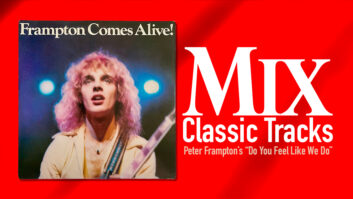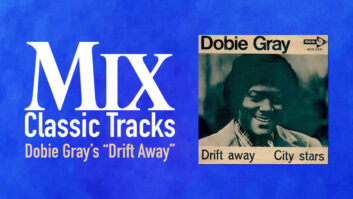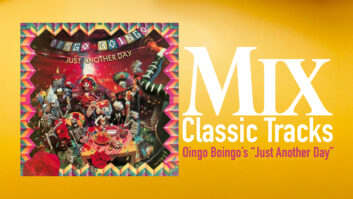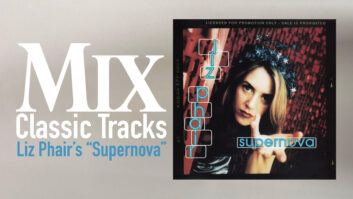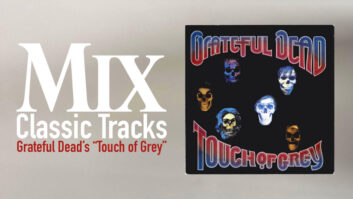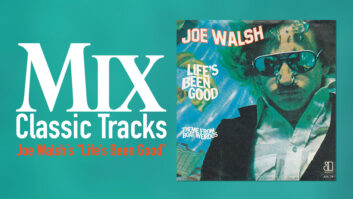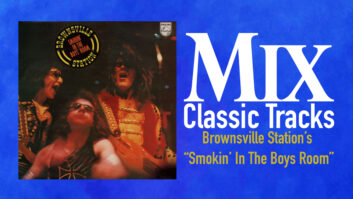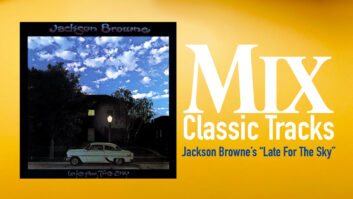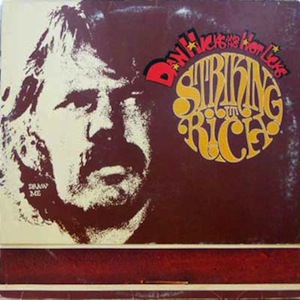
One of the most interesting and engaging groups to burst onto the pop music scene in the early 1970s was a San Francisco Bay Area outfit known as Dan Hicks & His Hot Licks, who fashioned an eclectic amalgam of retro music styles into something quite fresh and original. The wry, dry and clever singer-songwriter-guitarist Hicks delivered quirky songs that drew musical inspiration from Big Band vocal tunes, the swinging “hot jazz” of Django Reinhardt and Stéphane Grappelli, cowboy songs, ’20s and ’30s blues, various Latin styles and American folk sources, from bluegrass to jug bands. Besides leader Hicks, the prime version of the Hot Licks included the spectacular violinist “Symphony” Sid Page, the fleet-fingered guitarist John Girton, stand-up bassist Jaime Leopold and the wonderful harmony singers Maryann Price and Naomi Ruth Eisenberg.
The group emerged at a time when adventurous FM rock radio ruled the roost in many U.S. cities, so Hicks’ idiosyncratic, largely acoustic sound provided a welcome counterpoint to (or respite from) the big rock outfits of the day, such as the Allman Brothers, Derek & the Dominos, Yes, Jethro Tull, Elton John, etc. This month’s Classic Track is perhaps the group’s best-known song, “I Scare Myself,” which actually appeared on two different Hot Licks albums—a little-noticed 1969 effort for Epic called Original Recordings, featuring a different guitarist and backup singers, and the version we’re highlighting, from the group’s masterful and critically acclaimed 1972 opus, Striking It Rich.
Originally from Santa Rosa, north of San Francisco, Hicks was a drummer in his high school years but took up the guitar in college at San Francisco State during the folk music boom. Still, he was drafted to be the drummer in what turned out to be the first psychedelic band of Haight-Ashbury’s counterculture era, The Charlatans, who were as famous for their eccentric Edwardian/Old West look as the rather conventional blues- and folk-rock they played. Never as original or musically proficient as the Grateful Dead, Jefferson Airplane, Quicksilver Messenger Service or any number of other local bands, The Charlatans had a star-crossed few years before dissolving at the end of the ’60s. Far from being just the drummer in The Charlatans, Hicks also sang, played guitar and was the group’s best songwriter, turning out a number of tunes he would later transform and bring to the Hot Licks, including “How Can I Miss You When You Won’t Go Away,” “By Hook or By Crook” and “’Long Come a Viper.”
By the time The Charlatans breathed their last, Hicks was already playing clubs as a solo artist around San Francisco. “At some point in there,” Hicks says, “I made a demo of my songs at Columbus Recorders with Nick Reynolds [of the Kingston Trio, whose manager, Frank Werber, owned the SF studio], and I got some accompaniment for that. I think that’s maybe how I started adding people to my act—Jaime Leopold on bass and David LaFlamme on violin.” LaFlamme went on to front It’s a Beautiful Day (famous for “White Bird”), but Hicks liked having the violin accompaniment to his songs and soon enlisted Sid Page to fill the role.
“After I had the violin and the bass,” Hicks recalls, “I got the idea of two girl singers and went through a couple of different pairs. That gave me another reason to compose and create involving the girls with call-and-response or three-part harmony. I got more prolific. I’m pretty sure ‘I Scare Myself’ came out of that. The songs that turned up on the first Epic record were a product of that new stimulus.
“I’m not exactly sure when I wrote ‘I Scare Myself,’” he continues, “but I have a story in my mind of how I started the whole idea of it. I was living in the Haight and I went over to Sausalito to visit Nick and Joan Reynolds—Joan had a club in North Beach I used to play [in the late ’60s] called the F.W. Kuh Memorial Auditorium. I wasn’t much of a doper or a drinker at that time; that came later. During this period I mostly drank coffee and wrote songs and played gigs. But [the Reynolds] had some kind of hash or marijuana cookie, and I had a bite of that and I remember getting in the car and driving back to the city over the Golden Gate Bridge, and the phrase came to me: ‘I scare myself,’ because that’s how I was feeling—a little paranoid and uncomfortable. I don’t know if I saved that idea, or as soon as I got home started playing guitar. I used to carry around a little notebook and I’d write down titles or things that came to me. I think the whole love song part of it probably came pretty quickly, and I don’t have any recollection of it going in any other direction.”
As for the Spanish-influenced musical setting for the lyrics, “Maybe it was from me liking [Ravel’s] ‘Bolero’; I don’t know,” Hicks offers. “I started out as a drummer and I played a lot of dance gigs and dance classes up in Santa Rosa, so there were different Latin beats. But I didn’t want it to be a cut-and-dried Latin song.”
The ill-fated Epic album on which the song first appeared was cut at Columbia Studios in L.A. with producer Bob Johnston. By the time the next Dan Hicks & His Hot Licks album came out two years later—a live set called Where’s the Money?—the group had a new label (Blue Thumb), Price and Eisenberg comfortable as backup singers (who occasionally sang lead), no guitarist, and a new recording team: producer Tommy LiPuma and engineer Bruce Botnick.
LiPuma, one of the principals in the recently formed Blue Thumb operation, had already enjoyed a substantial career doing A&R and production at Liberty Records and Herb Alpert’s A&M label, “but I felt maybe I was being typecast a bit because I’d had hits with the [easy-listening vocal group] The Sandpipers, and then I was asked by Herb to do Claudine Longet [also easy listening], and that was a hit, too. But that’s not where I wanted to end up.” After seeing Hicks’ group play a show in L.A., he signed them to Blue Thumb and then brought in Botnick—with whom he had worked on many projects (though not on the Doors albums that made Botnick famous)—to record a live album at the Troubadour nightclub in L.A. That album drew raves from the rock press, and the group’s first national tour, with guitarist Girton now on board, was very well received.
When it came time for the group to record a studio album, it was a no-brainer figuring out where: Sunset Sound in Hollywood had seen many a session with LiPuma and Botnick, together and separately. So in January of 1972, Hicks and company headed down to L.A. to record Striking It Rich in Studio One at Sunset. Hicks had a bunch of recent tunes planned for the album, and at LiPuma’s request, two songs that had originally been recorded for the Epic album were re-cut: “I Scare Myself” and “Canned Music.” LiPuma says, “Dan gave me a little bit of a hard time about that—‘Man, we’ve already done those!,’ but I managed to convince him: ‘Let’s try it, and if they don’t come off, forget it.’ Well, they came off really well.”

Dan Hicks & His Hot Licks in San Diego, 1973. (L to R) John Girton, Maryann Price, Jaime Leopold, Naomi Ruth Eisenberg, Dan Hicks, Sid Page
Photo: Dave Collis
At that time, Studio One had recently replaced its original Alan Emig-designed tube console with a new solid-state one built by Frank De Medio. “It was a shock going from tube to solid-state, and not an improvement by any means,” Botnick recalls. “The sound wasn’t as open; it didn’t breathe as much. It took awhile to figure that out and how to deal with it. It was almost like going to a new studio, and I’d been there for years.” However, the De Medio console had 24 inputs (versus 12 on the tube board), with easy routing and monitoring. “There was a drastic shift in tonality, but it’s a matter of understanding what you’re listening to and then working around it. We had [Universal Audio] 176s [for compressors] and the EQs were all Pultec, which did mitigate some of the problems with the console. And if I go in there today and mix on that desk, it sounds great; a version of it is still there.”
LiPuma elected to record the album completely live, with all the players in the main recording room, eschewing the vocal booth altogether. “What we ended up doing,” LiPuma says, “was set them up in a semi-circle, and each of them had a mic, so everyone not only had eye contact, but they had a sense of what each was doing. They had earphones on, in some cases just one, to make sure their pitch was on. But it was totally live, recorded in the room, vocals and all.”
In Botnick’s recollection, “We may have done it on 8-track; you didn’t really need more, because you had the four instruments [two guitars, violin, bass] and three singers.” Both Price and Eisenberg also played hand percussion here and there, and Eisenberg also played a second fiddle. If it was, in fact, cut to 8-track, that would leave an extra track for the very few overdubs that were added, including a string section on three tunes and a very judiciously placed autoharp in spots on “I Scare Myself.”
Botnick, whose father was a violinist with the Ted Fio Rito Orchestra, says he particularly liked recording Sid Page, whose hypnotic, mind-bending, gypsy violin solo is the centerpiece of the five-and-a-half-minute “I Scare Myself.” He used a Sony C-37 on Page, either a C-37 or a Neumann U 47 to capture the guitars (Girton believes he played either an Epiphone or Gibson hollow body), and “probably a U 47 for the vocals,” Botnick says.
Studio One was a famously good-sounding room, but the ambience on most tracks recorded there was augmented by what Botnick calls “a world-renowned live chamber. We would have used that in conjunction with an EMT [plate reverb] that I had worked on and gotten to the point where I could almost get the tonality of the chamber; I got the decay so it pretty well tracked [the chamber].” LiPuma comments, “It was a magic room with a magic echo chamber.”
LiPuma is also quick to note that, “We weren’t going to go for an older sound. The last thing any of us wanted was to make it sound like a period piece. They had a unique style all their own. It was reminiscent of a lot of things from other periods—Django Reinhardt and so forth—but overall they had their own style; you knew it was them immediately. The singers weren’t trying to sound like the Andrews Sisters.”
“They were a lot of fun,” Botnick adds. “Dan ran a tight ship with his people. They came in well rehearsed and ready to go, so the sessions were pretty quick, if I remember correctly. Tommy is really one for performance; getting the notes right, to be sure, but getting the emotion of the performance, which is my thing, too. I learned a lot about that from him. Being able to do that band live in the studio was wonderful.”
Several songs on Striking It Rich got FM airplay when the album was released in the spring of ’72, including “You Gotta Believe,” “Walkin’ One and Only” and “I Scare Myself.” The band once again hit the road and this time also found themselves in their distinctive, cool, retro getups playing for national TV audiences on The Tonight Show (with Johnny Carson) and The Flip Wilson Show.
“That second [Blue Thumb] album was an absolutely magical time,” LiPuma says. “There was something about all of them that you couldn’t help but love. They were getting more and more popular. I would say they were an inch or so from breaking. But after a while there were problems going on in the band and between them and Dan. I think Dan got tired of dealing with everyone’s problems.”
Indeed, by the time they returned to make their third album with LiPuma, in 1973, Hicks had already decided to break up the band: “He had already titled it Last Train to Hicksville,” LiPuma says. And though the sessions were more difficult, they still produced a fine album together.
Hicks and LiPuma—who went on to a storied production career that includes multiple Grammys—have remained close through the years; they used to be very close: “Sometimes when Dan came to L.A. he’d stay with my wife and me,” LiPuma says. “At the time this [album] was made, we had one daughter who was 3 or 4, and when it was close to the point when our second child was going to be born, if it was a boy, it was going to be ‘Dan,’ and it was a girl it was going to be ‘Danielle.’ So my second daughter’s name is Danielle. The great part is, every time Dan would call me after she was born, he’d refer to her by saying ‘How’s what’s-her-name?’”
Hicks has had numerous bands since the original heyday of the Hot Licks, and he continues to regularly perform “I Scare Myself,” still one of his most popular tunes. Thomas Dolby had a minor hit with a smoky, jazz-flavored version of the song in 1984, “and Muzak did a version, too,” Hicks says with a mix of pride and amusement. “If you go on iTunes there a few versions by people I’ve never heard of.” A splendid live version of “I Scare Myself” also appeared on Hicks’ live, all-star 70th birthday celebration CD and video, called Live at Davies (after SF’s symphony hall) recorded in 2006. Page, Price, Eisenberg and Leopold were all there, along with such friends and admirers as Rickie Lee Jones, Ray Benson, Tuck & Patti, Maria Muldaur and others. A fitting féte for a true original who’s still bringin’ it after all these years.
